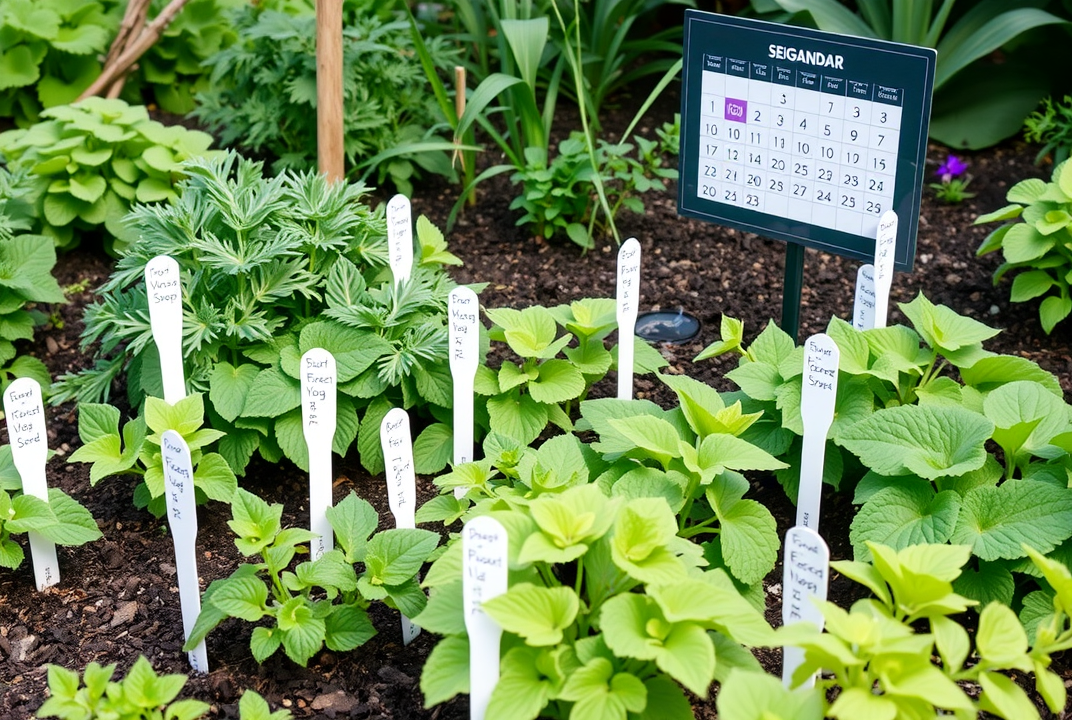How to Create an Effective Seasonal Planting Calendar

Introduction
Are you finding that your garden isn't yielding the results you hoped for? One possible reason could be the timing of your planting. Creating a seasonal planting calendar ensures that you are sowing your seeds at the ideal times for your region and the specific plants you are cultivating. This can make a huge difference in the success of your gardening efforts.
In this article, we'll explore the importance of seasonal planting calendars, tools and tips for creating your own, and how you can maximize growth throughout the year.
Why Use a Seasonal Planting Calendar?
A seasonal planting calendar is more than just a schedule; it is a blueprint for gardening success. Understanding when to plant specific crops is crucial for ensuring they reach maturity with optimum yield. Different plants have varied needs for sunlight, temperature, and soil conditions. By aligning your planting with natural seasonal changes, you set the stage for healthier growth and better results.
Benefits of a Planting Calendar
-
Optimized Growth: Timing your planting helps ensure that plants develop during their most productive periods.
-
Reduced Waste: Planning helps minimize wastage of seeds and resources by sowing at the right times.
-
Better Pest Management: Correct timing can help manage typical pest cycles, reducing the need for harmful pesticides.
Tools for Building Your Planting Calendar
Creating an effective planting calendar involves several tools and resources. Here’s a breakdown of what you might need:
1. Gardening Books and Guides
Books specific to your local climate will have tailored advice. They’re great for understanding regional nuances in planting times.
2. Online Resources and Apps
There is a wealth of digital resources available today. Websites and apps can offer personalized planting schedules tailored to your regional climate and gardening goals.
3. Local Agricultural Extension Services
These services often provide planting guides and might even offer classes or advice sessions with local experts who can help customize your calendar.
4. Weather Tracking Tools
Keeping an eye on weather patterns is crucial. Consider using weather apps or farmer's almanacs to anticipate conditions that affect planting times.
Steps to Create Your Own Seasonal Planting Calendar
Creating a seasonal planting calendar involves several key steps:
Step 1: Identify the Frost Dates
Knowing your region's first and last frost dates is essential. These dates impact when you can safely plant most seeds outdoors without risking damage from frost.
Step 2: Research Your Plants
Each plant species has specific growing requirements. Check seed packets or resources for information on the optimal planting times, light needs, and watering schedules.
-
Cool-Season: Plants like lettuce and spinach thrive in cooler temperatures and can often be planted early in the spring or late summer for fall harvesting.
-
Warm-Season: Crops such as tomatoes and peppers require warmer soil temperatures and longer daylight hours.
Step 3: Draft Your Calendar
Lay out a calendar, marking the appropriate windows for each plant category based on your findings.
Step 4: Adjust with Climatic Changes
Keep records of past weather patterns and consider year-to-year variations in climate. Adjust your calendar as needed to accommodate these changes.
Step 5: Monitor and Revise
Your calendar should be a living document. Adjust it based on actual growth outcomes and any unforeseen weather conditions.
Practical Tips for Success
Even with a solid plan, gardening success often relies on attentiveness and adaptability.
-
Keep Journal Entries: Document your results each season. This record will be invaluable for future planning.
-
Attend to Soil Health: Rich, well-drained soil is crucial for plant health. Consider composting and using organic fertilizers to improve soil quality.
-
Rotate Crops: Avoid planting the same species in the same spot each year to prevent soil depletion and pest accumulation.
Conclusion
Developing a seasonal planting calendar is not only about planting at the right times; it's about creating a comprehensive gardening strategy that incorporates climate considerations, plant selection, and regional specifics. The benefits of using these calendars extend to maximizing yield, minimizing waste, and creating a sustainable gardening practice.
Start planning your gardening season today with these tips and tools, and watch how your garden thrives with a bit of extra foresight and preparation.